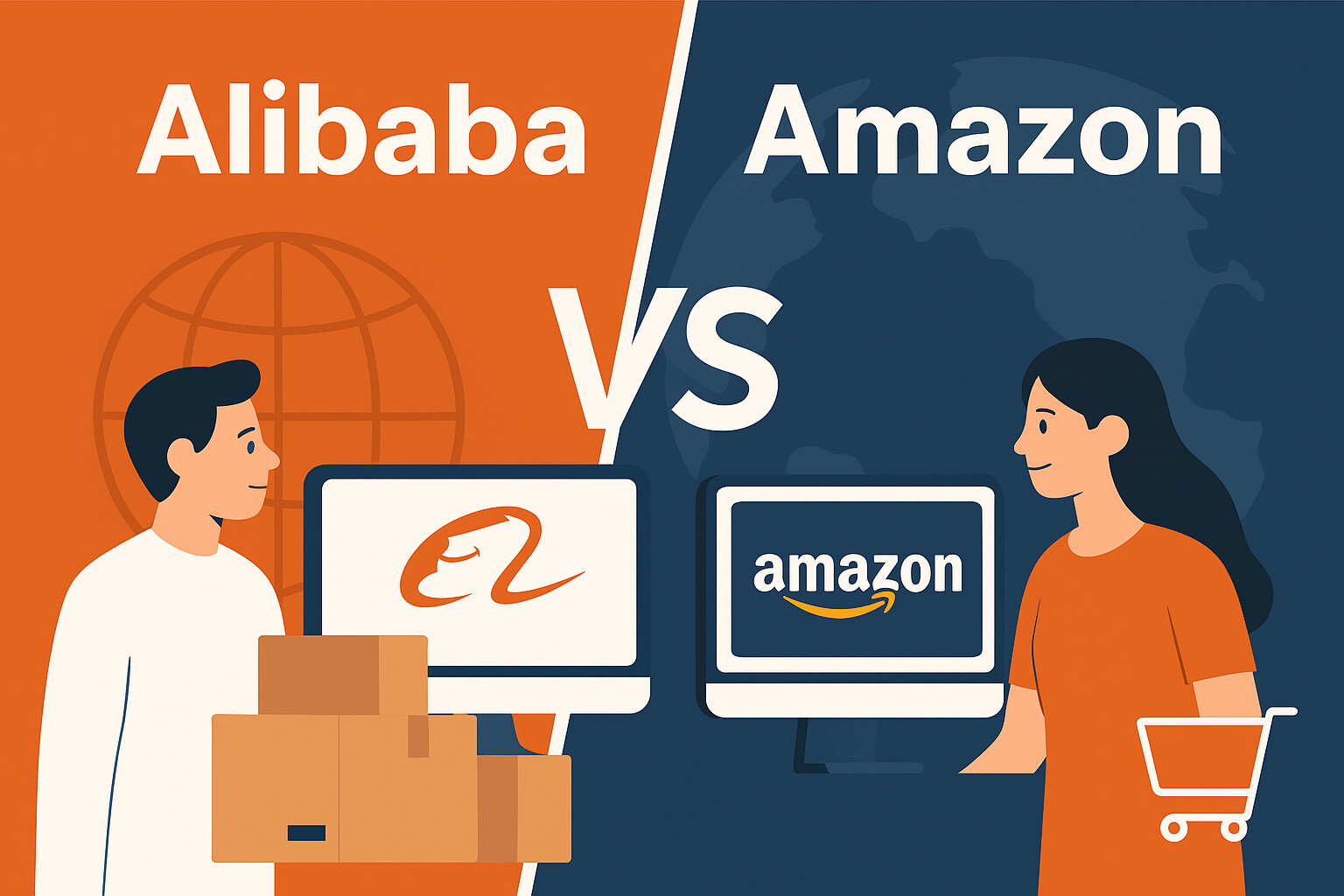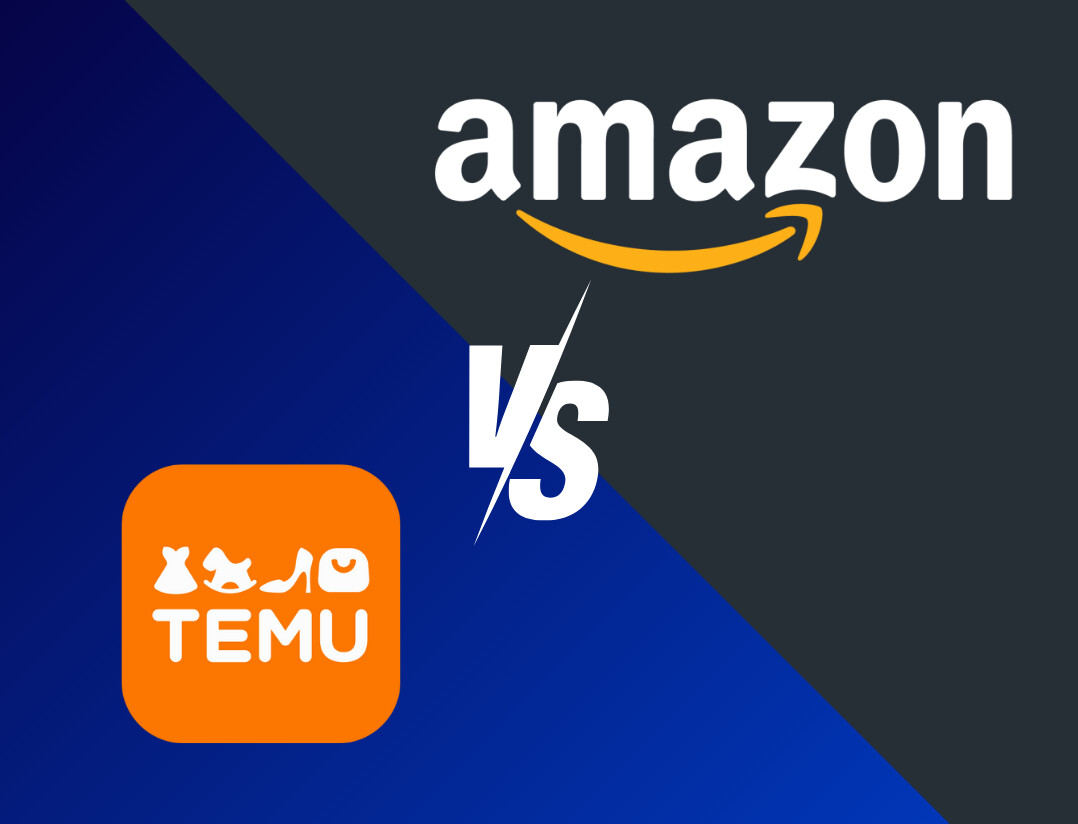Amazon and Online Shopping in Germany: How Powerful the E-Commerce Giant Is

E-commerce in Germany is omnipresent. The Covid years have accelerated the entire industry by more than a decade, and the effects of the pandemic are still changing the way businesses operate and grow. Consumers also research, buy, and pay for products differently today than they did ten years ago. One thing, however, has remained the same for years: the biggest player in the industry is Amazon. Online shopping begins for many German customers on Amazon.de and often ends there as well.
Amazon Unchallenged Leader
The competition can hardly keep up with the company’s growth. A first glance at the largest B2C online shops in the country highlights the dominance of the online giant in the German market. Amazon generates more revenue than the following six places combined:
| Place | Shop | Net Revenue 2021 (in million €) |
| 1 | amazon.de | 15,680.6 |
| 2 | otto.de | 5,124.0 |
| 3 | mediamarkt.de | 2,544.0 |
| 4 | zalando.de | 2,515.0 |
| 5 | ikea.com | 1,747.0 |
| 6 | saturn.de | 1,340.0 |
| 7 | apple.com | 1,190.0 |
Third-party sellers as a key factor
However, this is not solely the success of Amazon itself. Online shopping in Germany is also shaped by third-party sellers who offer their products through a marketplace. The revenue of such third-party sellers also grew significantly – from 29% to 34%, while in the years 2019 and 2020, the revenue of amazon.de remained at 19%.

Amazon clearly belongs to the few companies that were able to take advantage of the crisis. This is evidenced, among other things, by the investments in expanding warehouse space and logistics centers. In 2019, Amazon achieved a global revenue increase of $47.63 billion compared to the previous year. Then in 2020, the major upheaval came with Covid, resulting in an increase of $105.54 billion, followed by another strong revenue growth of $83.76 billion in 2021.
For the first time, revenue decreased slightly in 2022 post-pandemic. However, in 2023, Amazon was able to increase its revenue again compared to the previous year, both in Germany ($37.59 billion) and globally ($574.79 billion).

Growth in the Future – Forecasts

Every year, the German Trade Association (HDE) publishes the Online Monitor in collaboration with the Institute for Retail Research (IFH) Cologne. After the significant growth during the pandemic years, Amazon and the online shopping sector in Germany recorded a slight decline in 2022 for the first time. At least when only the previous year is considered. Compared to the online revenues generated before the Corona crisis, the increase is still over 42%. And for 2024, the industry expects growth of about three percent again. This is driven by increasing internet usage, social commerce, and new technologies such as augmented reality, which continue to align the online experience with the offline experience.
Third-party sellers look positively to the future
According to the The State of the Amazon Seller Report, most Amazon sellers also look positively to the future in 2024. 58% of all companies are profitable within a year of starting on Amazon, and more than half (54%) of brands and retailers have profit margins of over 20%.
Nevertheless, there are certainly problems that need to be overcome. For smaller Amazon sellers, the main challenges are to…
Enterprise companies and manufacturers are concerned about …
What is common to both groups is that they are struggling with rising costs, particularly in the areas of advertising (38% of respondents), shipping (37%), and manufacturing (35%). However, compared to previous years, fewer sellers fear problems with rising costs.
This also aligns with the fact that most sellers no longer sell exclusively on Amazon. The online shopping sector in Germany has now become more professional. Most online retailers have recognized that an omnichannel strategy with at least one additional sales channel can reduce economic risk and even increase profit. The three most popular platforms worldwide are eBay, Shopify, and Walmart, followed by Etsy.

Many Amazon sellers also have expansion plans for 2024. At the forefront are Walmart, Shopify, and eBay. However, some sellers also want to implement social commerce with TikTok, Instagram, and Facebook.
Amazon = Online Shopping in Germany: Buyers Often Prefer the Marketplace
Different statistics on Amazon’s success clearly show that the e-commerce giant not only generates higher revenues in Germany but also records steady customer growth compared to its competitors. A survey by IFH Cologne from 2021 shows: Those who shop online also buy from Amazon. According to the market research company …
But not only the survey by IFH Cologne confirms the assumption that e-commerce in Germany is shaped by the online giant. A 2022 survey by Pattern also shows that of 1,000 online shoppers from Germany, 96% reported having made a purchase on Amazon at least once in 2021. In doing so, Amazon customers prefer the German marketplace but are also not hesitant to shop on amazon.com or amazon.co.uk.

The survey also showed, …
These figures also show that Amazon has perfected the art of dominating online shopping in Germany. Most customers apparently find the marketplace so good that they shift their shopping behavior there. The reasons from the customers’ perspective for purchasing on the online platform range from price to fast delivery:
Prime is a growth driver
Amazon’s subscription model seems to play a particularly significant role in the use of the marketplace. Prime includes, among other things, particularly fast delivery and access to Amazon’s own streaming service. In 2021, Jeff Bezos announced in a letter to shareholders that Amazon Prime has 200 million customers worldwide. Just three years earlier, the Amazon service had surpassed the mark of 100 million subscribers.

According to the Germany Shopper Report, 15% more online shoppers had access to Amazon Prime. This means that 78% either have their own Prime subscription or can use that of family, partners, or friends. Combined with the finding that fast delivery is a major factor in why customers order from Amazon, a clear picture emerges: the increasing number of Prime members is an indicator of the rising revenue of the e-commerce giant in the coming years.
Amazon: Marketplace for Online Shopping in Germany is crucial
By now, Amazon has millions of third-party sellers offering their goods on the marketplace. Since 2026, this area has become increasingly important: over 60% of the units sold now come from third-party sellers. Since the increase is steady and occurs at a similar pace over the years, it can be assumed that Amazon is consciously controlling the development. However, the retail share of Amazon itself is unlikely to ever reduce to zero percent.

Conclusion
Is Amazon still indispensable in online shopping in Germany? The developments in e-commerce clearly show: those who want to sell online can hardly avoid Amazon. The Prime program has a decisive influence here, as Prime members are heavy shoppers and spend the most money on Amazon. At the same time, they largely rely on Prime offers because they receive free and fast delivery with them.
Online retailers can hardly avoid selling on Amazon. Nevertheless, diversifying their own sales channels is an important point, which is why having their own online shop or additional marketplaces like Etsy can make sense. Which channels specifically fit into their own omnichannel strategy is very individual and should be well thought out.
Image credit: © Anna Khomulo – stock.adobe.com








